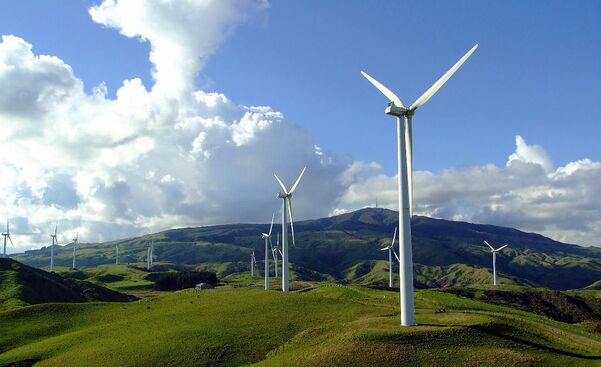Knowledge fuels change - Support energypedia!
For over 10 years, energypedia has been connecting energy experts around the world — helping them share knowledge, learn from each other, and accelerate the global energy transition.
Today, we ask for your support to keep this platform free and accessible to all.
Even a small contribution makes a big difference! If just 10–20% of our 60,000+ monthly visitors donated the equivalent of a cup of coffee — €5 — Energypedia would be fully funded for a whole year.
Is the knowledge you’ve gained through Energypedia this year worth €5 or more?
Your donation keeps the platform running, helps us create new knowledge products, and contributes directly to achieving SDG 7.
Thank you for your support, your donation, big or small, truly matters!
How to do Financial Planning for a Wind Farm
Financial planning is indispensable when deciding to start a wind farm. This project requires massive investment, which may go to waste if you don’t plan it thoroughly. You have to do in-depth research and execute due diligence to ensure that you consider a different aspect of the project.
When doing financial planning, you must know how to project revenue, identify costs, source out funds, prepare financial statements, and do financial analysis and financial metrics.
1. How to Project Revenue for a Wind Farm
There are two main factors when projecting revenue: production volume and prices.
To compute the production volume, you need to identify the power potential production based on the number of turbines installed. Then you have to multiply the potential production by the efficiency factor. The efficiency rate is the actual output from the potential power production.
There are two possible price points to sell the energy; off-take price and market price. However, you have to ensure that majority of the energy is sold through off-take to protect you from price fluctuation. The off-take agreement should be at least 25 years.
2. Identify the Operating Expenses
Projecting all the costs will help you manage your cash flow better, especially during the early stage of the operation when revenue is still not enough to cover all operating costs.
The costs to consider for your wind farm are operation and maintenance, security, land lease (if applicable), and other administrative expenses.
Preventive maintenance should be done instead of doing repairs to save costs in the long run and prevent significant damages to the farm facilities.
3. Decide Where to Source out Funds
Investors and banks are interested in putting funds in wind farms as the world is now shifting towards renewable energy. But you should first prove the viability of your project to them and present how you will distribute dividends or pay loans.
Also, inquire whether your country or state offers cash subsidies to support renewable energy projects such as wind farms. It can help a lot during the setting-up of the wind farm.
4. Compute the Initial Investment Needed
The capital expenditure (CAPEX) and operating expenses are significant factors in computing the initial investment. CAPEX includes land acquisition and installing turbines and other equipment in your project location.
The initial investment is needed until you have internal funds to finance the day-to-day operation.
5. Prepare Financial Statements
You can now prepare the financial statements after projecting the revenue and identifying the costs. The income statement, balance sheet, and cash flow are the basic financial information when doing the financial analysis of your project.
The income statement shows if the revenue can cover all the operating expenses and is gaining profit.
The balance sheet assesses if your equity and assets grow throughout the years and evaluate how leveraged your business is. Do you finance the operation more on equity or debt?
The cash flow statement is crucial to identify if you have enough cash to run the daily business activities. Many start-ups fail because of insufficient cash to sustain the operation. Making a cash flow projection will keep you aware of the timing of cash inflows and outflows.
6. Evaluate the Financial Ratios and Metrics
To understand better the viability of your project, you have to look at the financial ratios and financial metrics.
You can utilize the key ratios: liquidity ratios, profitability ratios, efficiency ratios, and growth ratios. These ratios utilize different accounts in the financial statements to better comprehend how the business performs.
On the other hand, the financial metrics include the payback period, net present value, and internal rate of return. Utilizing the financial metrics, in addition to financial ratios, can provide you with an analysis of whether to pursue the project or not.
Financial planning for your wind farm helps you evaluate every aspect of the business. It may be even better to use a financial model template when doing your financial planning tasks.
eFinancialModels offers financial model templates for a wind farm. Experienced industry experts prepare their financial model templates to help you do financial planning.




















